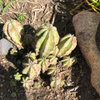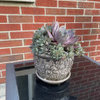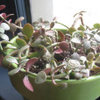Role of callus/callous in propagating Sans,Cacti, Succulents etc.
ash1970_gw
9 years ago
More Discussions
Hi,
Can anyone provide a bit of clarity for a newbie regarding the definition and role of a "callus" in propagating Sansevieria? (And cacti/succulents.)
Some Sans protocols seem to call for one day to weeks of callus formation in the air, before moving into a mix (dry or moist), while others go direct into a (dry or moist) potting medium. Similar usage of "callus" was noted in generalized cactus/succulent propagation, and a few tie things specifically to "rot" avoidance.
Perhaps the apparently (as I read it) contradictory information is due to shorthand used by experienced growers, or in my mixing up propagation by cut leaf vs severed pup/offset.
Now, is a callus an informal way of describing a dried edge after severing a plant, or is it a formal type of plant tissue that develops with the potential to derive new structures like roots or entire plants?
I guess I'm imagining if that is so, then a "callus" would form whether in the air, or (unseen) under a mix, always before the next step - whether for a severed leaf or rhizome.
Thanks for educating!
PS - I confess a very common very strong household Sans around here had always simply been divided right into new mix. But it's looking like that may not have been an optimal method.




hookilau
kaktuskris
wantonamara Z8 CenTex
ash1970_gwOriginal Author
wantonamara Z8 CenTex